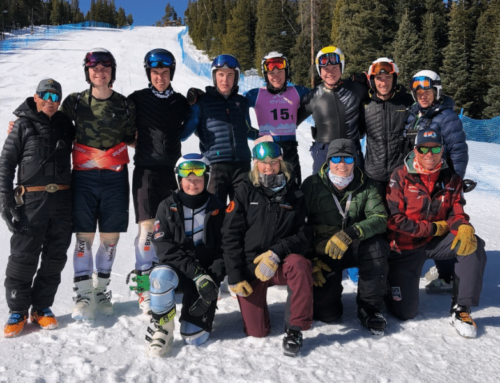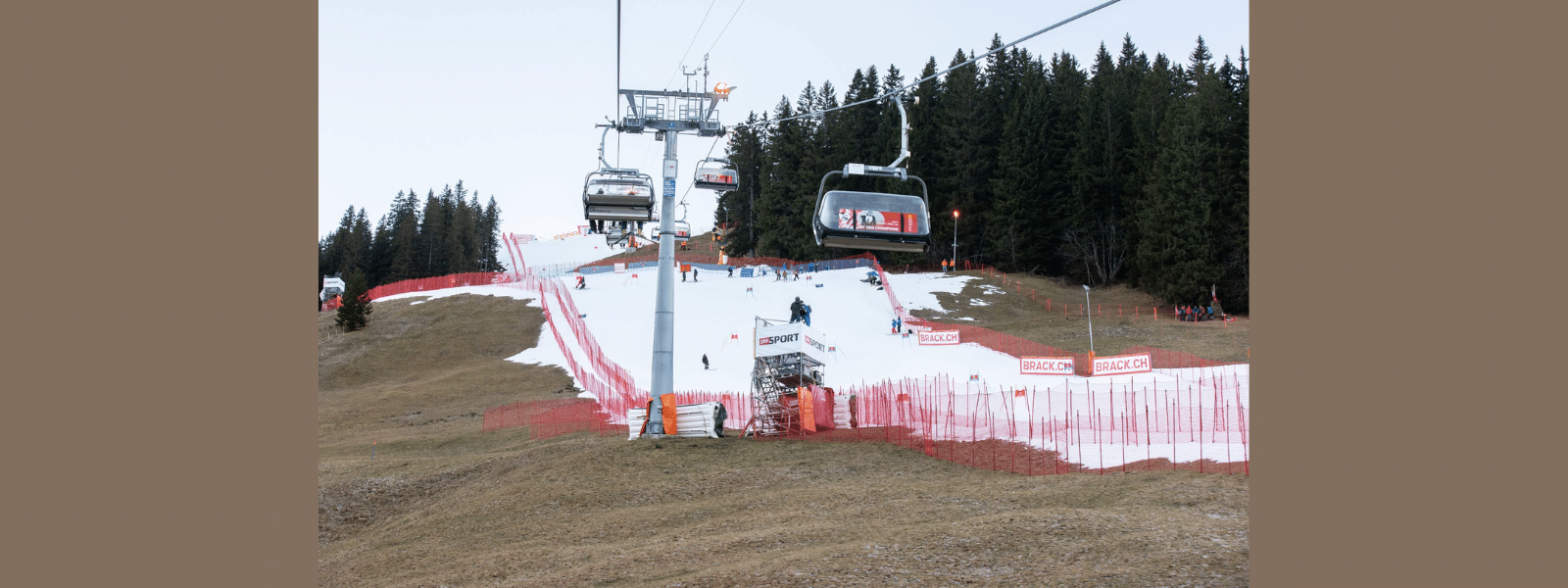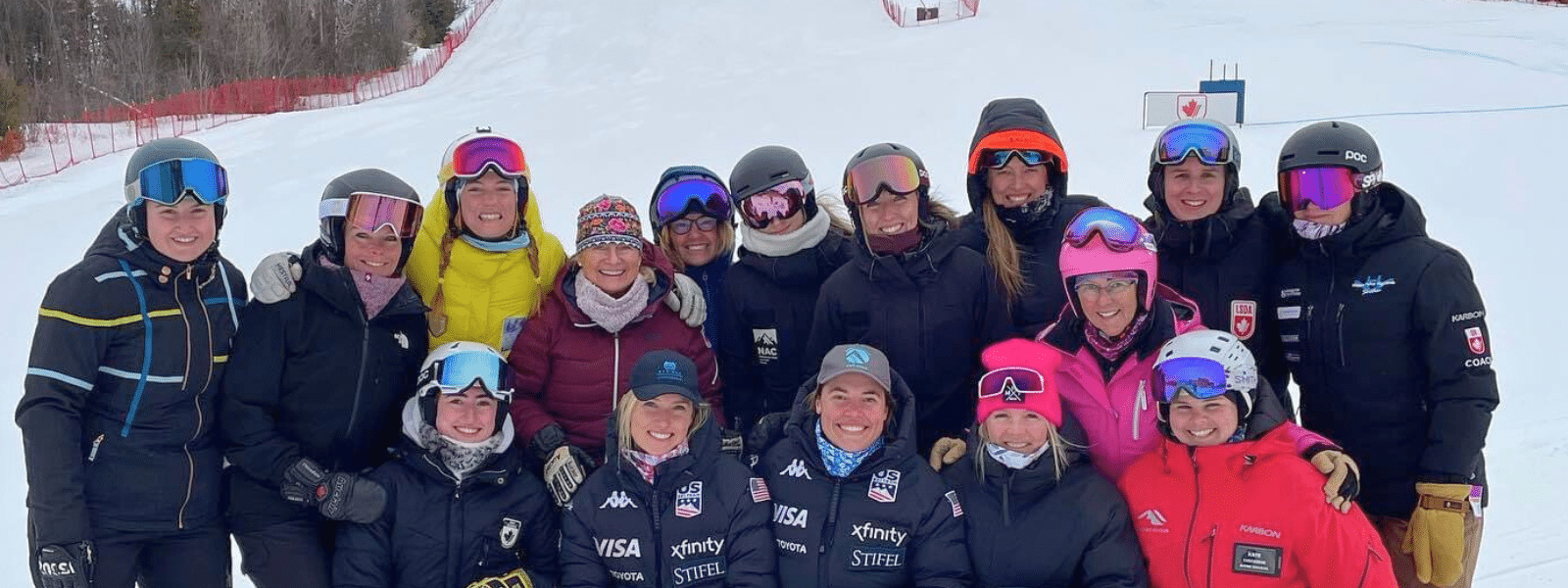High Fives to the Rescue
Roy Tuscany’s mother always said, “Smile: It’ll make people wonder what you‘re up to.” He lives by those words. Whenever you see him, it’s likely he is smiling, but there is no need to wonder what he’s been up to. Since Tuscany started High Fives Foundation in 2009, he has been paying it forward, providing injured athletes the community-based support that helped him rebuild his life after a devastating ski accident in 2006. To date, High Fives has raised $2.67 million to help 167 athletes from 31 states who have suffered spinal-cord, traumatic brain or mobility-limiting injuries, return to the sports they love. That kind of impact gives Tuscany every reason to smile.
I first learned about High Fives when the name and logo was emblazoned on Marco Sullivan’s helmet at the 2012 Lake Louise World Cup. At the time, Sullivan was battling back from injury and poor results, and was fighting to regain a permanent spot on the U.S. Ski Team. Tuscany recalls Sullivan’s pre-race comment. “If I’m going down in flames it might as well be with your name on my helmet,” he figured. Sullivan finished in third place that day, and went on to lead the American Downhiller charge for four more years on the World Cup Tour. High Fives is all about comebacks.
Tuscany is a local hero among athletes in the Tahoe area, and now across the country, for the foundation’s mission to “prevent life-changing injuries and provide resources and hope if they happen.” The latter circumstance brought me to the High Fives CR Johnson Healing Center in Truckee, CA, where I met the man behind the mission.
I came here with my friend and former teammate Eva Twardokens, who suffered a traumatic brain injury Feb 9, after crashing her small plane. Her multifaceted physical, emotional and cognitive recovery, bolstered by the loving and robust support network of her Santa Cruz home base, has been steady; but, losing the daily dose of the sports and the athletic community that once defined her has been difficult. She was ready to step out for a change of scene and a challenge. Seeing this, her teammates reached out to High Fives, and Tuscany invited Twardokens to come experience their facility.
HUMAN CARE IN ACTION
Within minutes of their first meeting, trainer Chris Cloyd, himself a competitive distance runner, mountaineer and snowboarder, had ignited Twardokens’ inner athlete. He was, literally, speaking her language (see Eva T Strength and Conditioning), using specialized equipment in a friendly, comfortable space, to put her in an arena where she could safely turn up the intensity and access her competitive drive. Immediately, with Cloyd’s direction and encouragement, her movements went from cautious and deliberate, to speedy, fluid and powerful. The key, Cloyd explains, is to simplify the signal to the muscles, and limit variance, which puts the body in situations where it can succeed. “As a rockclimber, I know that if I am top roping I can try anything. With neural injuries it’s important to have that sense of assurance,” says Cloyd.
Such attention is the difference between health care and what High Fives calls “human care.” On Day 2, Eva’s friend and former teammate Daron Rahlves greeted her with a surprise visit, giving her an extra boost. After only two sessions, Eva’s movement and outlook soared, and she jumped at Tuscany’s invitation to come back to High Fives, for two weeks of daily therapy. She left with a renewed sense of hope, and of her capabilities.
STOKIN’ HOPE
Tuscany, who is married to Paralympic winter and summer gold medalist Alana Nichols, is used to seeing such powerful transformations. It’s what keeps the new dad going all day at a dizzying pace—in the office at the Healing Center, traveling to High Fives fundraising events and camps or meeting with patients at Renown Medical Center in Reno. There, the High Fives peer mentoring program helps newly injured athletes “see beyond the end of their beds.” His message to them is that, “It will never be the same, but it can still be awesome.”
“I’m a hope dealer,” Tuscany explains. Indeed, hope is the very essence of High Fives, so-named for the high five Tuscany gave the surgeon who saved his life, and gave him his first ray of hope. The organization he started with a $500 Social Security check now has 10 employees and a $1.6 million annual budget. This funds Empowerment Grants, adaptive sports camps and the CR Johnson Healing Center, which attracts nearly 4000 visits a year from community members and High Fives athletes.
HOLISTIC HEALING
Iconic Tahoe freeskier CR Johnson died in 2010, at age 26, in a skiing accident. Johnson had successfully come back from a serious brain injury in 2005. He and Tuscany both understood the power of healing in a non-traditional, non-hospital, highly specialized setting, in a place that was supportive, positive, challenging and inspiring. Tuscany designed the 2,800 square foot Healing Center to honor Johnson and their shared vision.
Everything about the space—from the therapists who understand the unique physical, psychological, cognitive and communication challenges for athletes recovering from neurological injuries, to the giant pictures of adaptive athletes going big in their favorite outdoor sports—screams possibility. Twardokens, now in her second week of sessions at High Fives, is enjoying increasingly rigorous sessions with Cloyd. She’s also having cranio sacral massage sessions with Karen Stubbs and acupuncture with Barbara Ferrero. “There hasn’t been a day I haven’t added on, and there hasn’t been a day where we couldn’t do what we set out to do,” says Cloyd. At every session, Eva has been joined by friends and teammates encouraging her progress, and seeing her confidence grow.

THE POWER OF YOUR PEOPLE
“I have a big community,” Tuscany explains. “Every time we help someone, their community finds out about what we do and they want to be able to help, so we’re continually adding community.” Now I’m part of the community and my question is all too familiar: How far can Eva come in her recovery? Tuscany answers that with a challenge, to Eva and her community. “She has all the keys to success: Community, drive, goals. Now it’s how can we make sure all those keys can be used to unlock the potential of her recovery?” Much of that depends on the precious commodity of time, and how much time is given. “At the end of 10 days we’ll have a great picture of what 10 days look like, then what 100 days would look like,” says Tuscany. Making sure Eva gets that time is up to her entire support team, near and far.
Keeping a positive mindset is critical to success, and here again, being surrounded by a good crew is key. “It’s really hard for yourself to see progress because you are in it every day,” says Tuscany. “When folks check in every week or every month even, they are not seeing it minute to minute and they can really celebrate and encourage. When you have community around you it motivates you to move forward. It’s all about community.”
THE FUTURE
Tuscany’s long term goal is for the High Fives shield to be as universally recognized as the blue handicapped sign, so that, “When you see it, you know it’s an adaptive athlete,” he says. They might be vulnerable, they might need more time, but they’re determined to “find their awesome” by getting back to what they love. If there is anything more important than that to Tuscany, it is preventing injuries from ever happening. To that end, High Fives has just released a new B.A.S.I.C.S campaign aimed at educating young athletes to be aware and safe in critical situations. It consists of 5, one minute, individual campaigns that help outdoor athletes avoid the mistakes that lead to life-altering injuries.
The effect of High Fives was best summed up by Eva, the day after her first two visits, when she visited Sand Harbor on Lake Tahoe. Instead of just looking at the familiar scenery of her youth, Eva changed plans, grabbed a hand for support and waded waist-deep into the brisk October water with her friends. Feeling emboldened with each step, she started thinking about all the activities like surfing, skiing, windsurfing and swimming that she had been missing. When she got out of the water, she had a revelation: “Before, I wondered if doing these things again was possible. Now, I think they are probable.”
Learn more about High Fives, the BASICS program, and see some inspirational videos at highfivesfoundation.org.
Featured image: L to R is Tamara McKinney, Heidi Voelker Brennwald, Polly Reiss, Eva Twardokens and author, Edie Thys Morgan.





















